Who better to understand mental illness than one who had been seized by authorities and hospitalized five times over a twenty-two year span? Dr. Ferguson led a troubled life of addiction and psychotic breaks. In 1954 he arrived at Traverse City State Hospital, but not as a patient, but rather as a general practitioner to treat mentally ill residents. However he lacked any credentials as a psychiatric doctor. Many people adored him and others questioned his tactics.
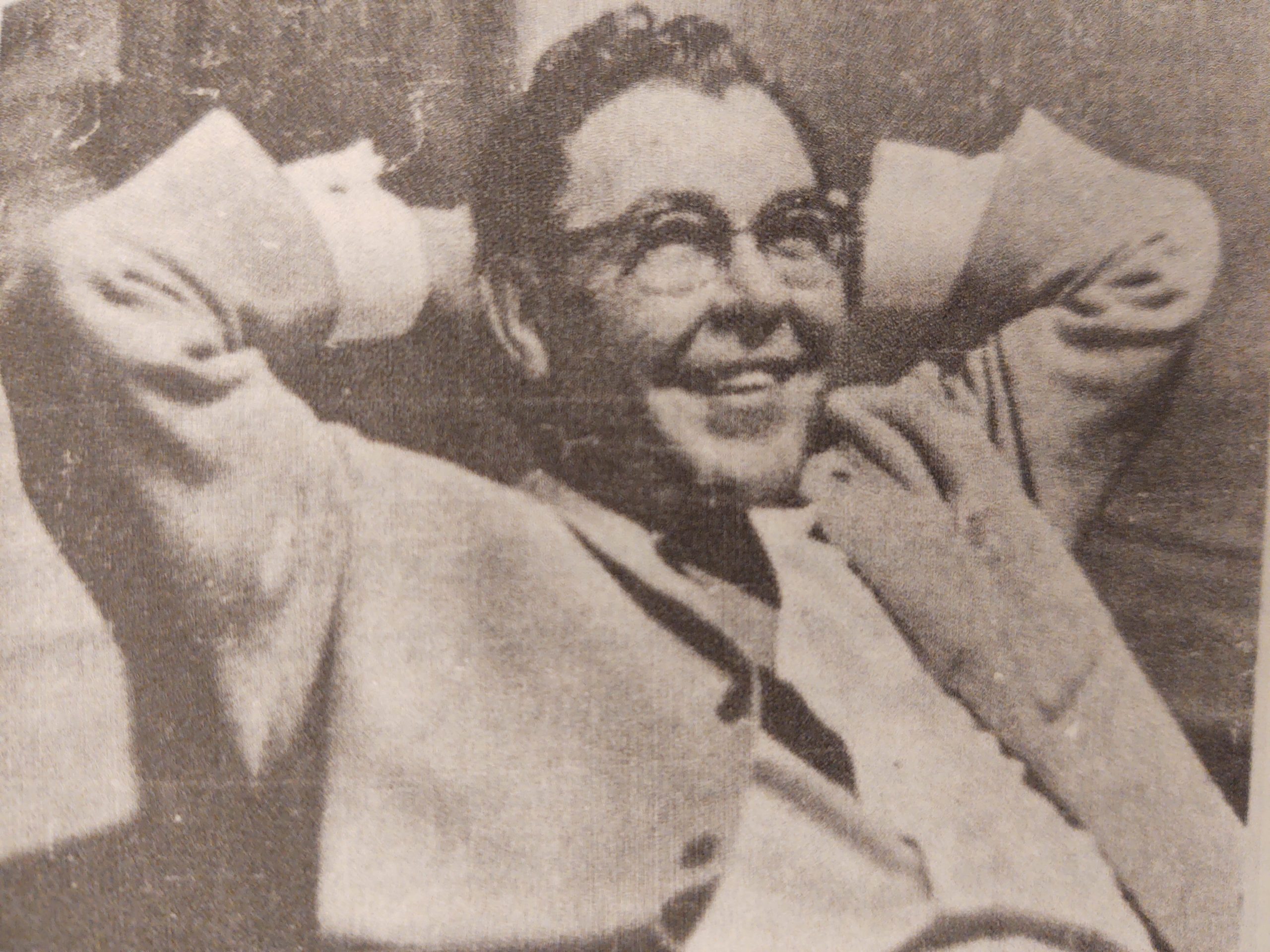
He started working at the Traverse City State Hospital in 1954.
During his medical schooling he had perfected the execution of lobotomies in only five minutes. When he arrived at Traverse City State Asylum five hundred patients were assigned to him for this procedure.
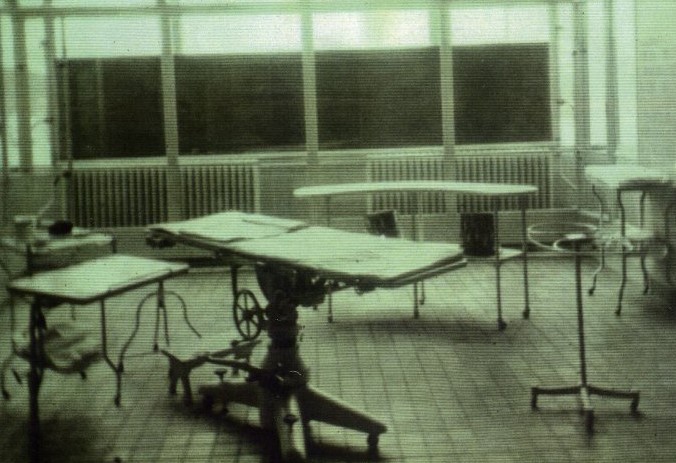
Photo Credit: “Traverse City State Hospital”
Although Dr. Jack Ferguson had developed a systematic method for quickly executed lobotomies, he had come to realize that it wasn’t a ‘cure.’ He also rejected straightjackets, shock treatments and solitary confinement. He believed that diseases were chemically based and could be reversed with neuro-chemical medications. This view was completely radical for mental health in the 1950’s.
Dr. Franzin, Dr. Phipps and especially Dr. Gallup had been caring doctors when Jack had been committed. (five times in twenty-two years) They hadn’t done the typical shock therapy. Rather, Dr. Gallup had Jack write his worries down. Dr. Gallup would read each aloud and ask Jack to tell him more about these thought patterns and concerns. Talking through his fears had really helped Jack see a new perspective. Terry and Griff, the hospital attendants, were respectful and treated Jack as a person. Using tranquillizers and talk therapy had been effective for him, so it should work for others who suffered with mental illness. “We don’t treat diseases, we try to treat sick people.” was Dr. Jack Ferguson’s motto.
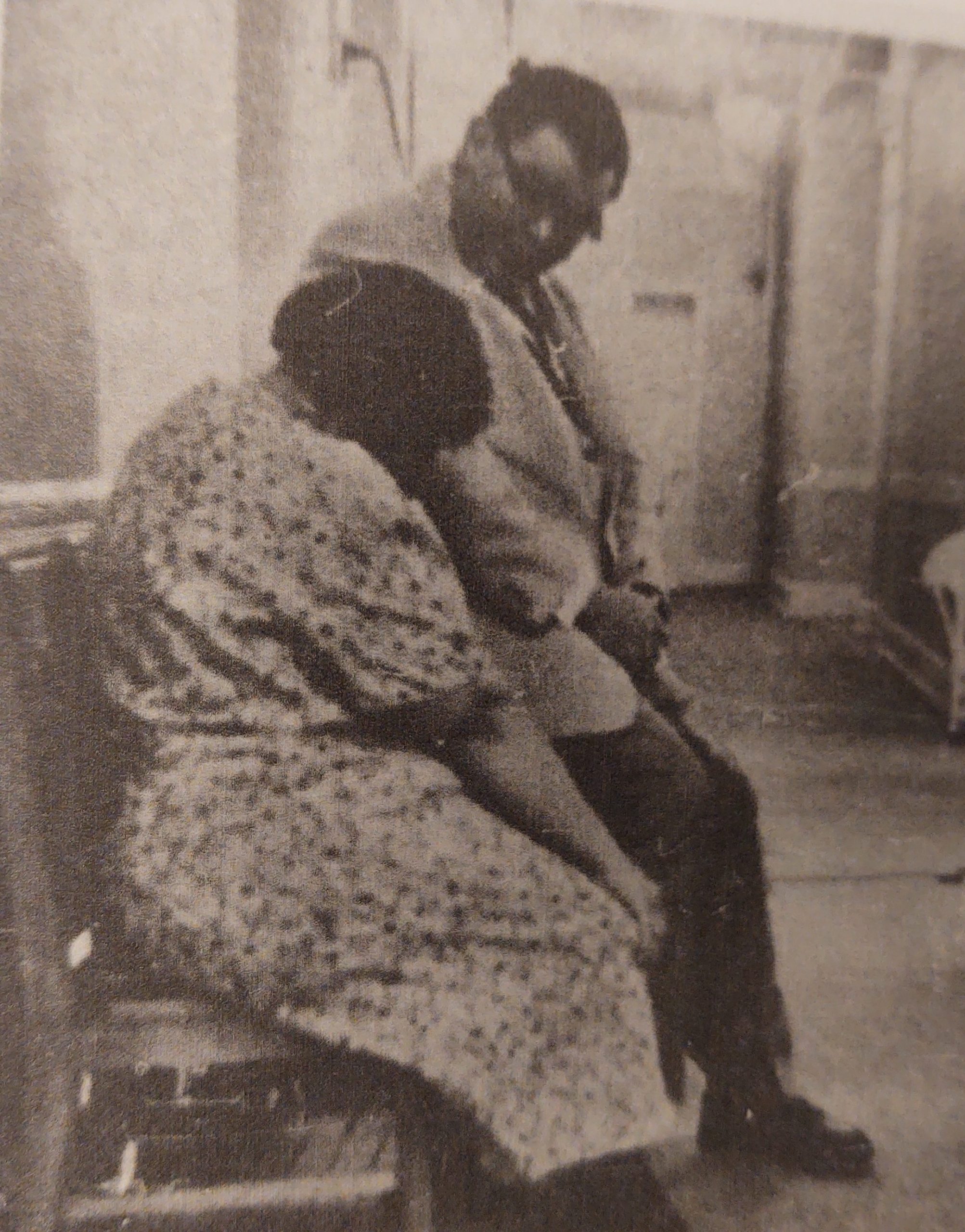
Chicago Tribune, November 30, 1955
Photo Credit: Andrew Ravlin
On February 24, 1957, Norma Lee Browning from the Chicago Tribune reported that, “He never did get around to even the first one. (lobotomies) Instead, with an unscientific combination of chemicals plus love, he pierced the veil of insanity in one of the boldest, most bizarre and awesome experiments ever tried in a mental institution.” The study was deemed one doctor, one hundred seven nurses and one thousand (chronically hopeless) patients.
Dr. Jack Ferguson’s medication experiments were only conducted by himself and his nurse attendants. There wasn’t a control group involved in his studies. “They (nurses) all have a high-school education or its equivalent.” He stated proudly to Paul De Kruif who had interviewed Ferguson extensively for his book. “There is no abnormal behavior that we cannot control or change for the better.”
One woman was uncontrollable with dementia, diarrhea and dermatitis. Her diagnosis was Pellagra, a vitamin B deficiency. If untreated it could be fatal. After a few massive shots of Niacin (Vitamin B), she was able to return home a week later.
What brought Dr. John (Jack) Ferguson to his “chemicals and love approach?”
Ferguson had several occupations before earning his medical license. Starting at age 11 he worked on a tugboat. He told the captain he didn’t want pay, rather the fish damaged in the gill nets. He sold these on the street and made more money than the small wage he would have been paid. Jack Ferguson was resourceful. He also ran two paper routes and worked at a drugstore after school.
“I’d trample on anyone for affection. That was the first hint of a mad monster in me.” He shared with Paul De Kruif. Ferguson said he was frail and a bedwetter. He felt compelled to compete with his younger brother for his parent’s love.
He gained employment in a steel mill in Gary, Indiana. He learned to curse in German, Lithuanian, Spanish and Polish. Using dolomite to write on the mill’s floor, Ferguson taught a Polish worker some basic English.
Next he joined his father on the Monon Railroad as a fireman. He worked full time and squeezed in medical school courses starting in 1929. Surprising himself he got married and within a year they had a baby girl. Soon after his daughter was born, he dislocated his knee at the railroad and could no longer work. He slipped into a depression. He attempted suicide by slitting his wrists.
He tried to be an insurance salesman, then a bartender and a whiskey peddler. He sold secret car loads of booze to Al and Ralph Capone at the Fowler Hotel in Layfeyette. Ferguson learned about alcoholic insanity first hand.
In 1941 at thirty-three years old Ferguson reinstated his dedication to medical school. His wife displayed her lack of trust and would pester him with questions about his plans, work hours, money and study habits. This started their family ‘break up.’ They divorced and his ex-wife and daughter moved to California.
When not in class Jack tended bar at a campus tavern and met Mary Tosti, a 28 year old Italian girl who worked as a cashier. Mary said that Jack was ‘large’ when they met. It took time for their attraction to develop. On April 24, 1944 they were married.
In 1945 he suffered a heart attack. He spent seven weeks in the hospital. Ferguson started taking barbiturates. “They blotted out my perspective of reality.” When he returned home he continued to take the little yellow capsules. Mary nurtured Jack during his recovery. However, Jack’s addiction made him paranoid and he started to blame Mary for his misery.
Soon after he recovered Ferguson was in a horrible car accident and unable to attend classes. The professors arranged to have Ferguson work in the biochemistry laboratory and teach anatomy. He had to prepare the bodies for the anatomy students.
Ferguson was fascinated by Professor Fulton’s lobotomies performed on chimpanzees. In 1936 Dr. Egas Moniz in Lisbon, Portugal conducted 20 leucotomies on ‘human mental sufferers.’ This was done by drilling a hole in each side of the head and cutting nerve fibers that connected the frontal lobe of the brain. Seven of the patients recovered their sanity. Dr. Moniz earned a Nobel Prize for this accomplishment. In the states Dr. Walter Jackson Freeman followed and performed many more. I wondered if Ferguson started perfecting his lobotomy procedures on the cadavers that he was preparing for the medical students.
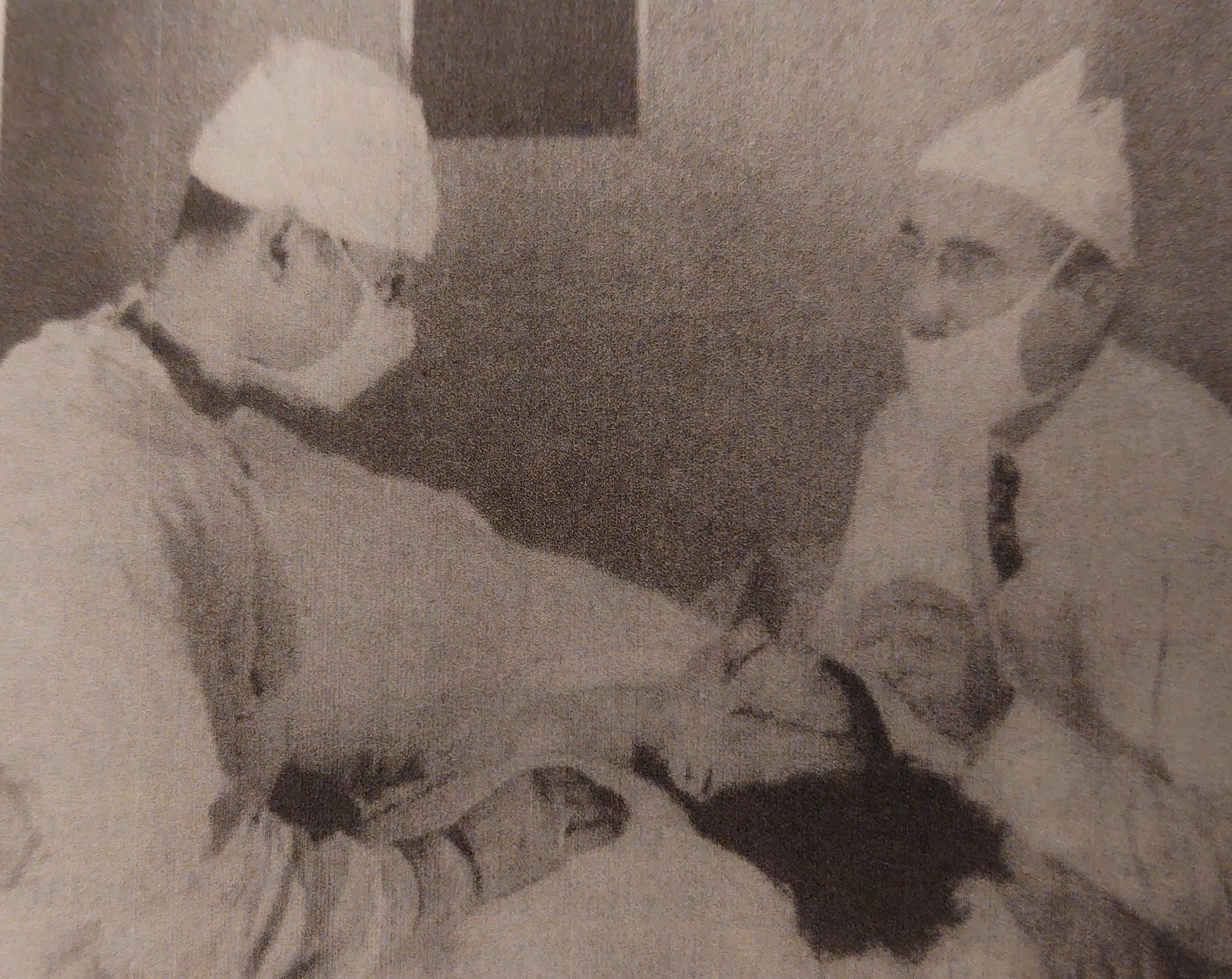
Jack Ferguson was later known for his five minute lobotomy where he used a long sharp tool through the upper part of the eye socked to cut the nerve fibers severing the frontal lobe from the thalamus.
Finally after 18 years. forty year old Ferguson earned his M.D. in 1948. Hamlet, Indiana, a town of 500, welcomed the outgoing personality of Dr. Ferguson, who reported he had still been “shaky.”
His perfectionist personality continued to cause him grief. In his desire to be the best, he bought the latest x-ray machine, putting them into debt. Mary worked tirelessly as the receptionist, book keeper, janitor and cook. He continued to lean on his little yellow pills to get through the demands of keeping his country practice running smoothly.
His addiction created hallucinations and paranoia. He had a “blow up” where he tried to kill Mary and take his own life. He was taken into custody and committed to a mental hospital.
Dr. Gallup along with Dr. Franzin and Dr. Phipps treated Dr. Jack Ferguson. “They made me dig up and face the bad deeds I had done.” It had been an intense six months of therapy. By 1954 Dr. Jack Ferguson was considered cured.
Traverse City State Asylum
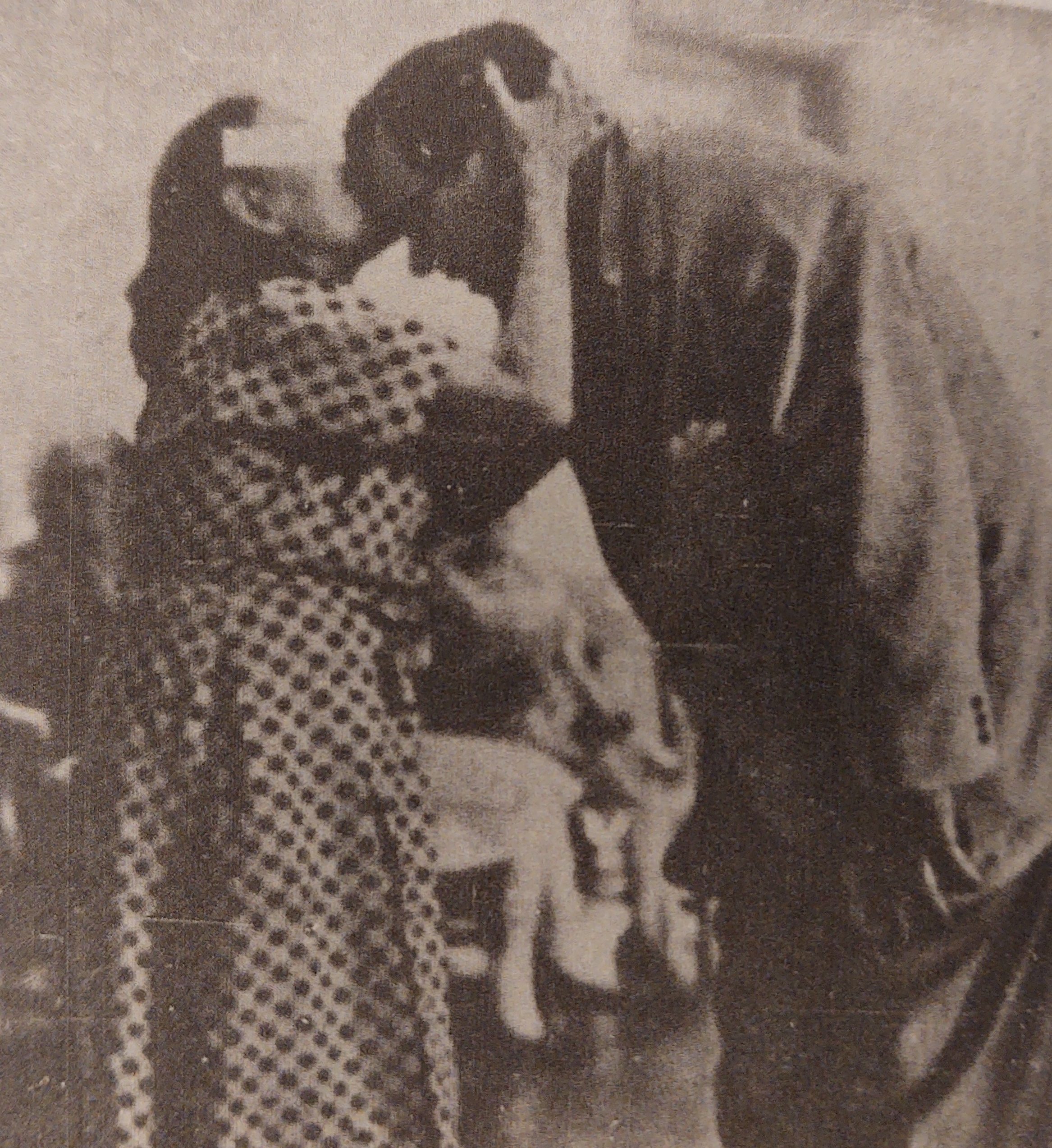
“They all love this outgoing man.” Chicago Tribune, November 30, 1955
Photo Credit: Andrew Ravlin
Art Nickerson, who worked with Dr. Jack Ferguson in Hall 11, chuckled, “He was a jolly old Saint Nicholas type.” “Everybody loved him and thought he did a good job,” was Nickerson’s stance on an oral history recording.
Jim Morse, who worked at the hospital from 1956-1984, shared that Dr. Ferguson bought a new coffee pot for each ward. “That was 50 of them!” He stated with enthusiasm. “The medication (for patients) was a welcomed addition.”
Horace Storrs worked in Cottage 24 for seven years. He recalled Dr. Ferguson using Stelazine medication. It would bring a patient ‘out’ otherwise the individual would be aggressive and angry, so he’d have to be segregated. These tranquillizers made a huge difference in managing the residents.
Dr. Ferguson used Serpasil (a tranquilizer) and Ritalin (a stimulant) together on 225 varying aged “hopeless” patients. 80% significantly reduced their fighting and destructive behaviors. The eating habits of 71% become normalized. 74% became productive in occupational therapy. 72% could attend social functions on campus. They had movies on Monday nights and once a month they held a dance.
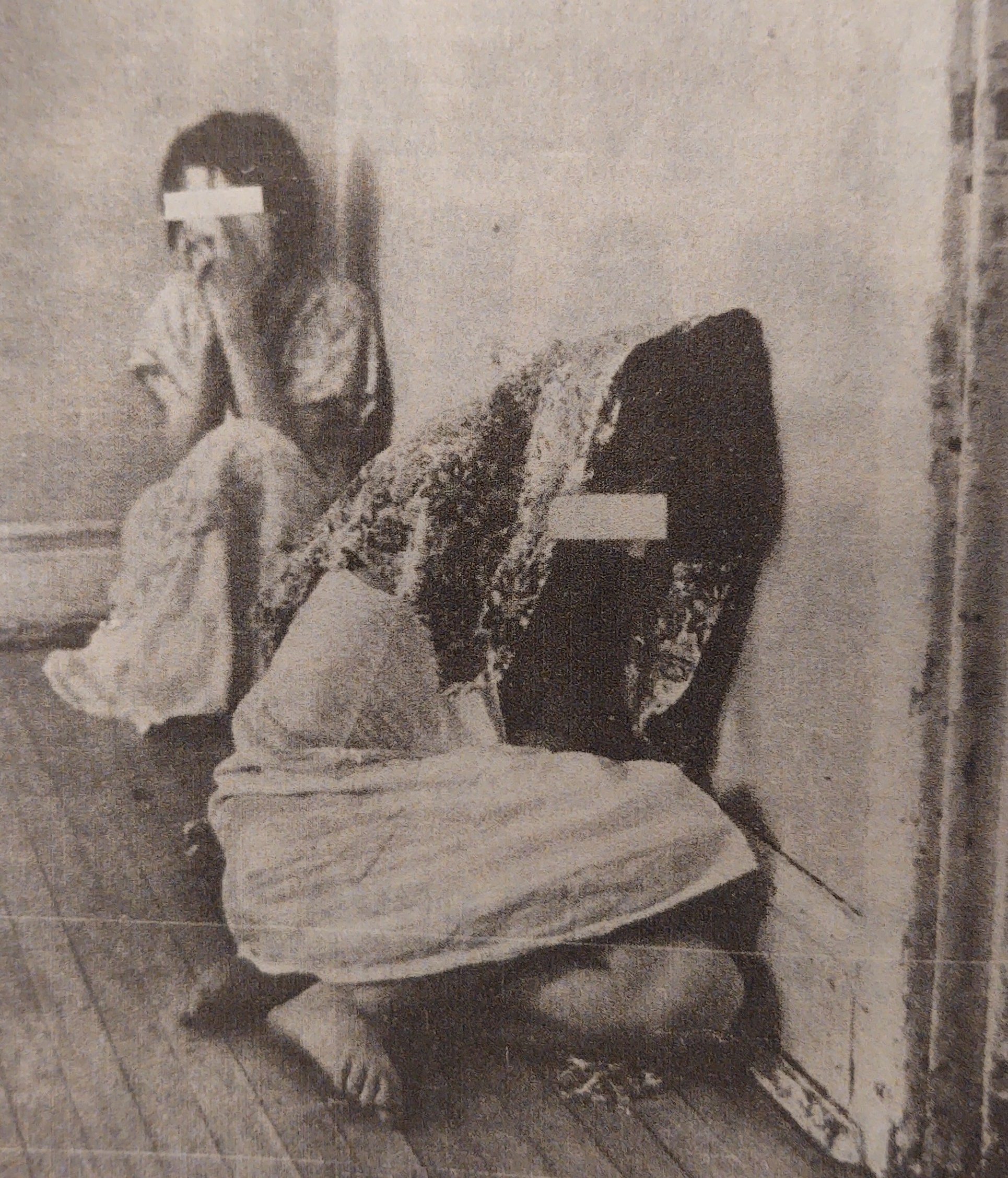
new “tender loving care and chemical” treatments.
Chicago Tribune, November 30, 1955
Photo Credit Andrew Ravlin
Since the start of Serpasil-Ritalin therapy the on-campus beautician was being overbooked for trims and permanents. These “hopeless” patients started to care about how they looked.
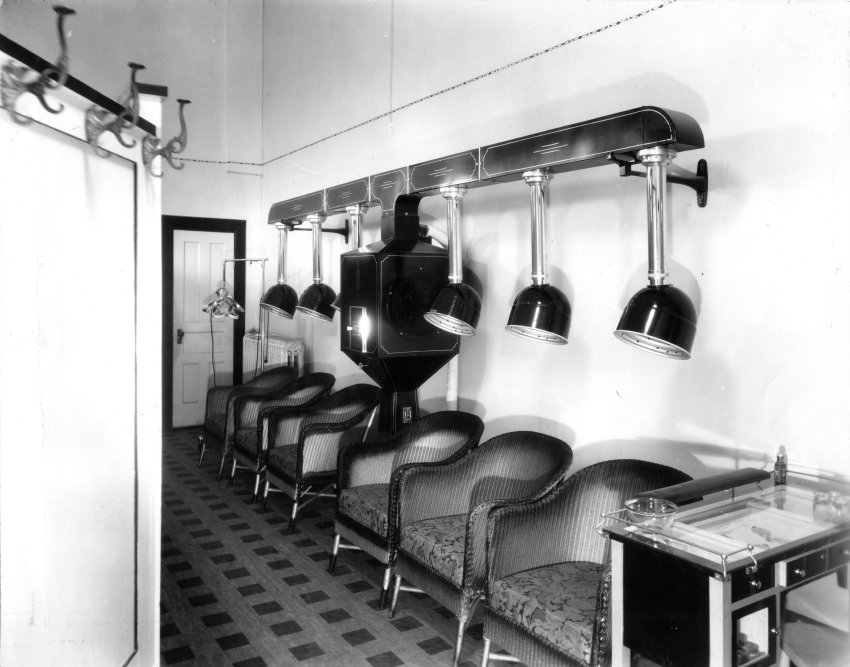
This was when Maurice Mummy, an instructor at the Northern Michigan Beauty School, started organizing his students as volunteers. My mother, Marcia Lee Bunek, was one of his pupils. “The people I worked on were subdued. They probably had given them medication of some sort.” She recalled, “However there were some others who were screaming out from behind the bars. Some had taken off their clothes.”

Gudrum, a 71 year old female patient, had been hospitalized for 52 years. During her first 50 years she couldn’t care for herself at all. She had often laid down naked on the floor of the seclusion room. In 1942 it had been recorded that she had received 28 metrazol shock treatments with no lasting results. In 1943 she was 420 “neutral pack treatments” where she was wrapped up tightly and dipped in cold water. Gudrum was also given electro shock treatments where she had 68 convulsions. Her behavior continued to be similar to a disgruntled wild animal.
On Christmas day in 1954, Dr. Ferguson began administering a half a milligram of Serpasil three times a day. After two weeks Gudrum remained dressed for the first time in 30 years. Continued doses put her into a depressed state. Dr. Ferguson gave her Ritalin. This made her edgy and aggressive again, so he re-introduced Serpasil. Then he tried his ‘treatment gimmick’ of giving her Ritalin, but before she could become agitated he would quickly give her Serpasil. It was a delicate dance of dosing (three milligrams of Serpasil and fifteen milligrams of Ritalin three times a day) was the key to keep Gudrum on an even keel.
Gudrum was able to receive ‘ground parol’ and walk about the campus. She like to go to The Canteen shop for snacks. She was able to eat in the dining room. A nurse said that they only had to occasionally remind Gudrum to wear her shoes. Dr Ferguson took Paul De Kruif to meet her and said, “Gudrum cannot be called mentally well, but we are sure she is enjoying life for the first time in many years.”
The Journal of the American Medical Association published a paper by Dr. John T. Ferguson and Dr. William H. Funderburk about improving senile behavior. “Urge Drug Use to Curb Antics of Aged” 15,000 reprints were distributed. Ferguson’s hope was that family doctors could start medication therapy at the first signs of dementia, before institutionalization. This would reduce heartache and burden. It seemed so simple to Ferguson.
In early 1956 Ferguson felt pride that 150 of the 1,000 “chronic hopeless” patients had been able to be sent home or to family care. However, he saw trouble. Some patients weren’t wanted by their families and the fact that there wasn’t enough family care facilities available.
His own colleagues were more interested in sharing rumors about his past and not embracing his model of “chemistry and tender loving care” as viable treatments for individuals struggling with mental challenges. Ferguson found little support for which he had always yearned.
In February 1968 there was a small fire at the hospital. Dr. Ferguson was directing traffic on a busy corner of 11th and Division when he was struck by a car. He died on arrival to Munson Medical Center.
Dr. Jack Ferguson had always craved acceptance and perfection. After experiencing his own mental health struggles and treatments, he steered toward alternatives to lobotomies. Dr. Ferguson’s methods were unconventional and upsetting to many colleagues. “Tender Loving Care” along with medication was a fine balancing act, but had proven to be effective in most cases. He spear headed a whole new outlook on how to treat mentally ill patients.
Resources:
Norma Lee Browning. Chicago Tribune, February 24, 1957
De Kruif, Paul. “A Man Against Insanity” 1957
Miller, Chris. “Traverse City State Hospital” 2005
Traverse City Oral History Project, Grand Traverse Commons
https://medium.com/invisible-illness/the-country-doctor-who-cured-insanity-d849cac9bd2d
Other Reading: Kristen Hains. “Beauty is Therapy“





